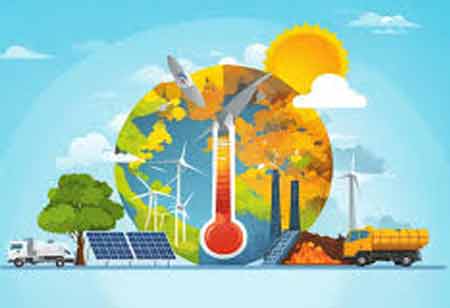Thank you for Subscribing to Construction Business Review Weekly Brief
Specials
- Apartment and Condominium Contractors Canada
- Decking Canada
- Architectural Glass Europe
- MEP APAC
- Construction Saudi Arabia
- German Apartment and Condominium Contractors
- Construction Law APAC
- Outdoor Construction
- Foundation Construction Canada
- MEP Canada
- Kitchen and Bath
- Cold Storage Construction APAC
- Precast Concrete Europe
- Construction Staffing Europe
- Pre-Construction Services
- Flooring System APAC
- Scaffolding Canada
- Swimming Pool Construction Canada
- Construction Management Canada
- Cold Storage Construction Canada
- Flooring Systems Europe
- Residential Construction
- Concrete Canada
- Construction Cladding Europe
- Construction Cladding APAC
- Concretes, Aggregates and Construction Materials APAC
- Concretes, Aggregates and Construction Materials Europe
- Commercial Contractors Europe
- Commercial Contractors APAC
- Dummy
- Construction Insulation, Coating and Waterproofing
- Construction Management APAC
- Landscaping Canada
- Construction Coating Europe
- Construction Tech Startups Europe
- Insulation Services Europe
- Mechanical Contractor Canada
- Mould Remediation and Testing Europe
- Swimming Pool Construction APAC
- Building Sealing Solutions Europe
- Construction Engineering Services
- Mechanical Electrical and Plumbing
- Roofing Systems Europe
- Architectural Glass APAC
- Startups APAC
- Construction Forensic and Owners Representative
- Flooring System
- Waterproofing APAC
- Wall Systems
- Safety and Compliance Europe
- Construction Bidding and Auctions
- Modular and Prefab Construction
- Architectural Glass
- Construction MENA
- Construction Demolition and Recycling Europe
- Modular Construction Europe
- Construction Interiors
- Steel Building APAC
- HVAC
- Doors and windows
- Construction Latam
- Building Information Modeling APAC
- Sustainable Construction APAC
- Building Restoration and Maintenance
- Commercial Contractors
- Specialty Construction
- Construction Engineering Canada
- Construction Engineering MENA
- Modular Construction Canada
- Modular Construction APAC
- Roofing and Siding Systems
- Workforce Management and Staffing
- Roofing Systems APAC
- Construction Consulting
- Steel Building Europe
- Construction Demolition and Recycling APAC
- Safety and Compliance APAC
- Concretes, Aggregates and Construction Materials
- Construction Cladding
Future Innovations in High-Performance Window Technology
The future of high-performance windows emphasises energy efficiency, sustainability, and innovation. Advances in materials and regulations are driving significant improvements in thermal performance and environmental impact.

By
Construction Business Review | Friday, October 18, 2024
Stay ahead of the industry with exclusive feature stories on the top companies, expert insights and the latest news delivered straight to your inbox. Subscribe today.
The future of high-performance windows emphasises energy efficiency, sustainability, and innovation. Advances in materials and regulations are driving significant improvements in thermal performance and environmental impact.
FREMONT CA: The future of high-performance window technology is poised for remarkable innovations that promise to enhance energy efficiency, sustainability, and aesthetics in residential and commercial buildings. Advancements in smart glass technologies, such as electrochromic and photochromic glazing, allow control over light and heat entering spaces. These innovations enable occupants to adjust the glass's transparency, improving comfort and reducing reliance on artificial lighting and heating. Consequently, significant energy savings can be achieved while maintaining a stylish and adaptable living environment.
Triple-glazed windows are emerging as a substantial improvement over traditional double-glazed options to enhance thermal performance. Incorporating three panes of glass reduces heat loss, offering superior insulation. Additionally, advancements in framing materials contribute to greater energy efficiency and durability in window installations, further elevating their performance.
Triple glazing provides numerous benefits, including enhanced thermal performance, improved energy efficiency ratings, and reduced noise pollution. These advantages translate to greater comfort for occupants, lower heating and cooling costs, and an extended lifespan for windows. These solutions enable homeowners to optimise energy efficiency, making them responsible choices that also help minimise environmental impact.
The landscape of energy efficiency regulations is rapidly changing, pushing innovation boundaries in high-performance windows. As countries and regions intensify their commitments to combating climate change, stringent mandates are being implemented to ensure that buildings utilise the most effective materials. These regulations guide consumer choices and compel manufacturers to continuously upgrade their products to meet enhanced standards, establishing a future where energy-efficient solutions are standard.
Global trends in energy codes are becoming increasingly significant, with many jurisdictions implementing rigorous energy efficiency regulations that demand better thermal performance and reduced operational energy consumption. For manufacturers and builders, these changes require a proactive approach to compliance and certification, ensuring projects meet the latest standards. This avoids potential penalties and also enhances property marketability.
Regulations emphasise the importance of key performance metrics used to evaluate window efficacy, including U-value, Solar Heat Gain Coefficient (SHGC), and Visible Transmittance (VT). These metrics assess thermal insulation, solar energy absorption, and light transfer. Adhering to best practices in window testing and certification is essential for maintaining quality assurance and ensuring that investments meet or exceed industry expectations. Selecting windows based on these optimal performance metrics can yield significant long-term energy savings.





